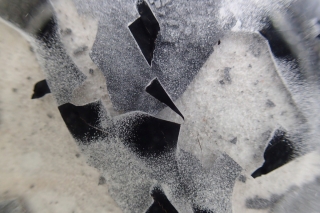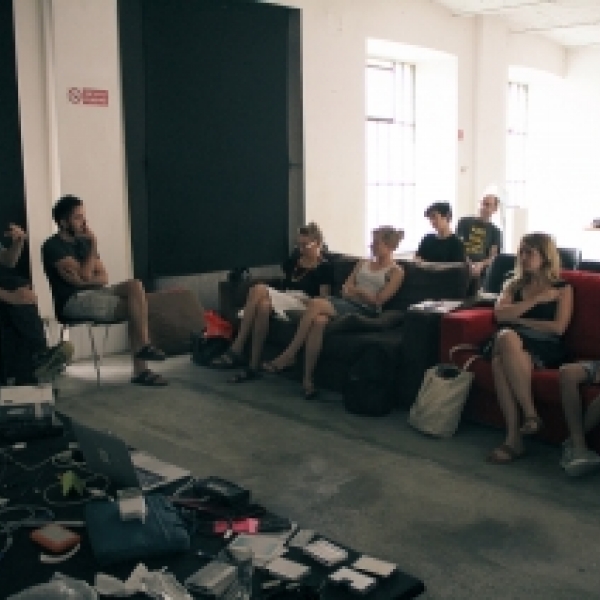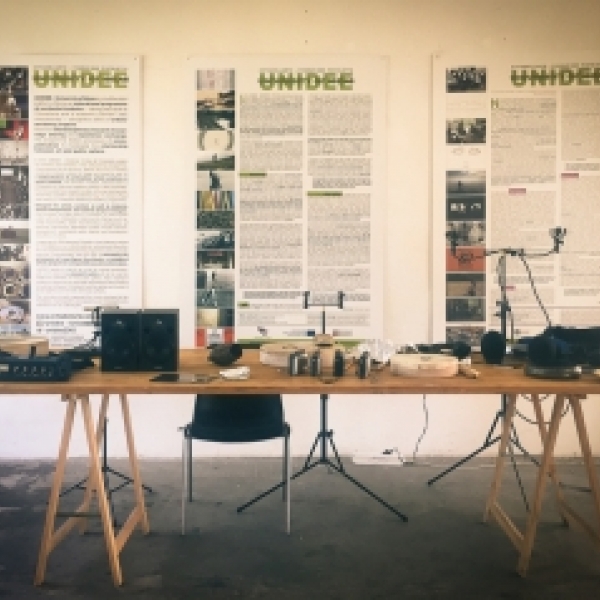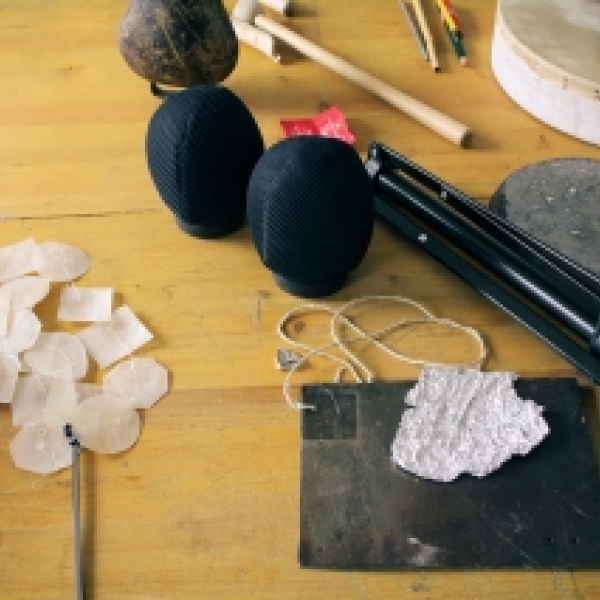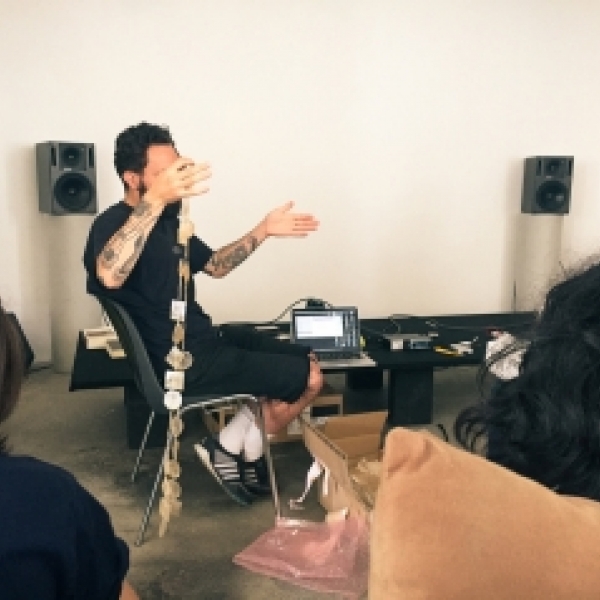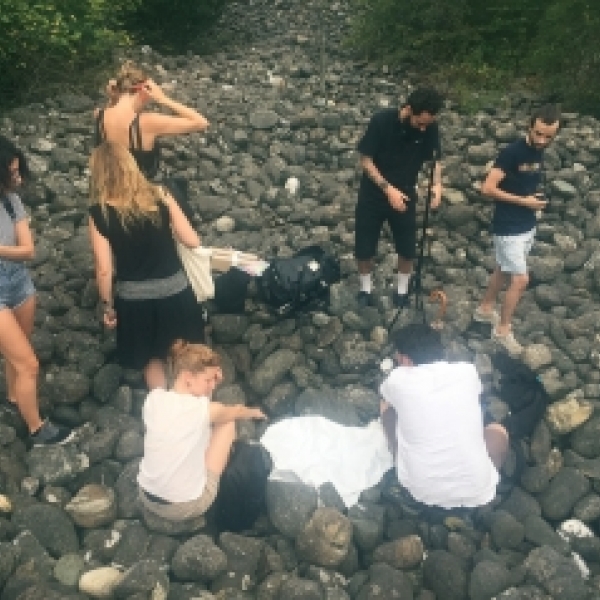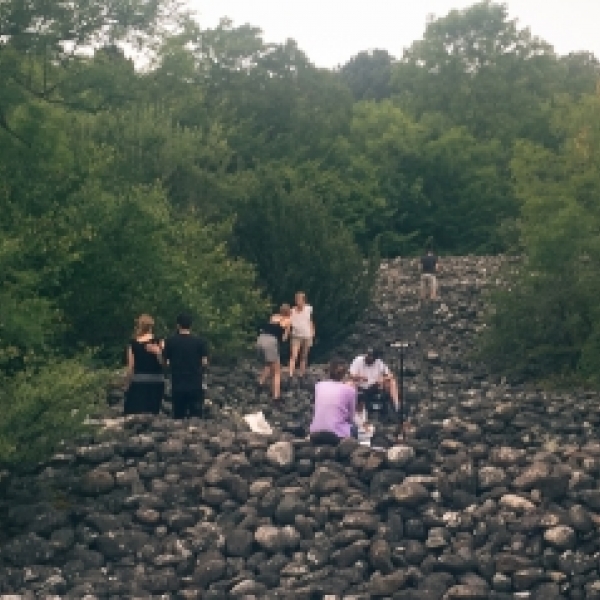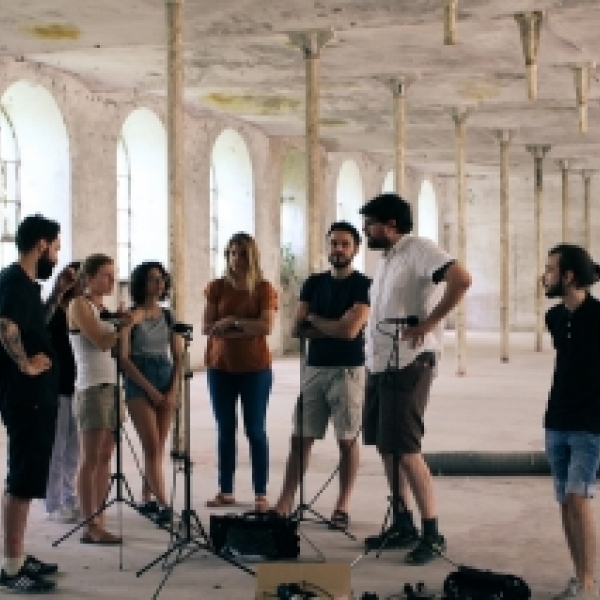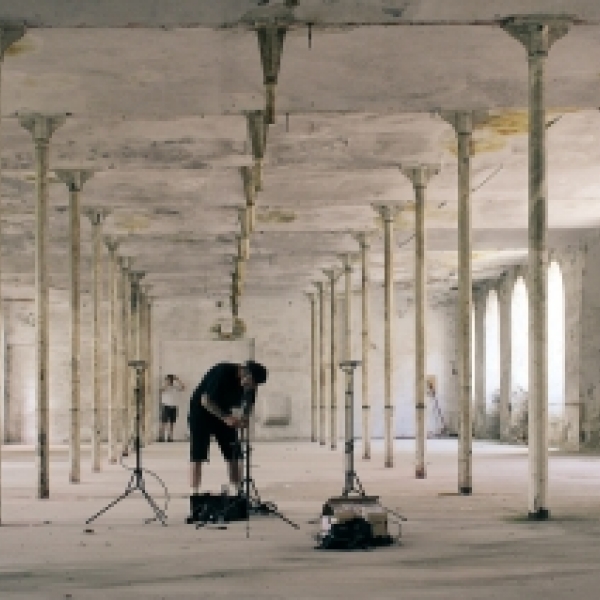The Dance of Attention. What happens as soon as we press ’record’ on a device
The module, by means of both practical and theoretical sessions, confronts forms of direct action and perception with ones mediated by technological means of sound recording and reproduction.
Given a world which sees an ever growing wide-spread use of advanced technological tools to capture and share one’s experiences, as well as a conditioned reflex by artists to heavily rely on forms of audio-visual documentation to show their work to a broader audience, the workshop aims at deepening the questions which arise “as soon as we press ’record’ on a device”: Where in our own culture (present and past) lies the urge to overly develop and refine techniques to sort fixed things out of a flux of living matter? Is it possible to turn these techniques into levers to de-stratify perception, even if they were partly born out of a desire to objectify reality? What strategies to adopt in order to find a ‘simple’ use for these complicated tools?
To follow the lead by the Japanese sound artist Toshiya Tsunoda, “documenting is based on reality, but it is not a secondary supplement to reality. Documenting is not just a hollow version of reality, but is in itself a complete, autonomous being that exists within its own space and time. In other words, documenting plays its own role in our world. For instance, although footsteps are just a physical mark on the ground, we acknowledge them as independent matter, separate from the ground itself. This is because we have the ability to recognize 'images'. This 'image' can be described as a 'trace' left by many factors colliding in a given space. I prefer to describe my recordings as a 'trace' of reality, rather than a 'relation' to reality”.
In our daily routine, as we go about our business we actively prioritise certain elements and eschew others, sound functions for us as a carrier of useful information: “A given sound provides information about an interaction of materials at a location in an environment” (William W. Gaver). E.g. we know from the sound of a car in an alley its provenance and we use this information not to be run over, or we focus our attention on the voice of a person talking to us in a crowded space, filtering out the background noise.
But what if we’d bring a microphone into the world, into the very same “environment” we live in?
The microphone’s horizon of listening is unconcerned and unbound, purely shaped by its technical capacities. Sound recording practices are not just a mechanism through which objectivity can or should be transmitted, they are instead a powerful creative tool through which “To experience the texture of the world without discrimination. Texture is patterned, full of contrast and movement, gradients and transitions. It is complex and differentiated. To attend to everything the same way is not inattention to life. It is paying equal attention to the full range of life’s texturing complexity, with an entranced and unhierarchized commitment to the way in which the organic and the inorganic, colour, sound, smell, and rhythm, perception and emotion, intensely interweave into the aroundness of a textured world, alive with difference. It is to experience the fullness of a dance of attention.” (Erin Manning and Brian Massumi).
Despite the balance of the workshop tilting toward sonic practices, the topics discussed, as well as the exercises proposed, aim at facing broader questions related to the relationship between unmediated and mediated experience.
SCHEDULE
July 17th
morning
Guided tour to Cittadellarte (Curated by Elena Rosina), including the Pistoletto, Arte Povera collections and temporary exhibitions.
Introduction to the Theorem of Trinamics, the symbol of the Third Paradise and the concept of Demopraxy.
afternoon
Workshop and group presentation. Field recordings: listening sessions, introduction to the microphone and its functioning. Short performances of Enrico Malatesta by using acoustic sounds specifically developed to highlight the specificity of listening through microphones. Participants’ presentations.
July 18th
morning
Gathering. Field recording session. Playback and discussion about the achieved results.
Small spaces, hidden micro-environments, daily objects and surfaces. Listening session and video screenings.
afternoon
Walking. Exploration of interior spaces: sound-actions and observation of the spaces' conditions and listening sessions. Exercises to improve the awareness of a specific space’s affordances. Short performances and recording session.
July 19th
morning
Adam Asnan: guest presentation and short performance.
Sound-Space relationship and recordings technics introduced by Adam's sound work and research. Aesthetic potential of recorded, amplified sound. Auditory image. Possible uses of a ‘spatialized’ sound diffusion. Unpredictabiliy of behaviour by different playback devices. Work in the ‘field’.
afternoon
Practical session: Field recordings session guided by Adam Asnan and Attila Faravelli. Sound of sound interventions and actions curated by Enrico Malatesta with a small group of workshop's participants, to take place outdoor.
July 20th
morning
The microphone’s horizon of listening. Laboratory about active listening and rhythmicity. Readings. Brainstorming and discussion.
afternoon
The microphones and the role of the recorder in the documentation of non-western traditional music and sound phenomena.
Listening session and video screenings. Field recording session. Various locations.
July 21th
morning
Workshop about active listening, sound-space relation and material's vitality. Introduction to the idiophones and recording. Readings. Brainstorming and discussion.
afternoon
Field recording session. Various locations (indoor and outdoor).
evening
Listening sessions of 'non western' traditional music. Party.
REFERENCES
The mentor will prepare a reader for participants with key texts, some of which will be discussed during the week.
• Erin Manning, Brian Massumi, Thought in the Act: Passages in the Ecology of Experience Paperback, University of Minnesota Press, 2014.
• Tim Ingold, Being Alive: Essays on Movement, Knowledge and Description, Routledge, 2011.
• Tim Ingold, Making: Anthropology, Archaeology, Art and Architecture. Routledge, 2013.
• Jonathan Sterne, The Audible Past: Cultural Origins of Sound Reproduction, Duke University Press, 2003.
• Emily Thompson, The Soundscape of Modernity, The Mit Press, 2002.
• Barry Blesser, Linda-Ruth Salter, Spaces Speak, Are You Listening?: Experiencing Aural Architecture, The Mit Press, 2006.
• John Blacking, How Musical Is Man?, University of Washington Press, 1974.
• Gilbert Rouget, Music and Trance, A Theory of the Relations between Music and Possession, The University of Chicago Press, 1985.
• Donald Tuzin, Miraculous Voices: The Auditory Experience of Numinous Objects, The University of Chicago Press, 1984.
• Tsunoda Toshiya, “About My Field Recording”, Reductive one, June 2014.
• Albert Mayr, “Sketches for a Low-Frequency Solfège”, Music Theory Spectrum Vol. 7, Time and Rhythm in Music (Spring, 1985), pp. 107-113.
• William W. Gaver, “How do we hear in the world?: Explorations in Ecological Acoustics”, Ecological Psychology, 5(4) 1993
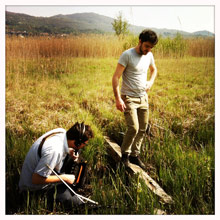
BIOGRAPHY
Attila Faravelli (Milano, Italy, 1976) and Enrico Malatesta (Cesena, 1985) are sound artists and long term collaborators. They first met in 2012 to compose and perform music for a contemporary dance play (Teatro Valdoca, Cesena, IT). This initiated a series of diverse collaborations ranging from electro-acoustic music releases (www.balloonnneedle.com) to research projects about the perception of a surfaces' irregularities (auraltools.tumblr.com/bilia) and the use of an everyday-life-use object to produce sound (www.lateraladdition.org/#24). In their collaborative works they explore the relationships between sound, space and gesture, with a focus on producing complex sonic information through simple actions and tools in contrast to the conception of music as a fully intentional human output.
In 2013, together with Nicola Ratti, they founded Tilde, a collaborative project created with the aim to explore, through sound actions, the possibilities of listening and practice of the space.
Attila Faravelli and Enrico Malatesta have presented their work in festivals and leading art institutions and universities throughout Europe, North America, Japan and South Korea. Among the institutions with which they have collaborated: Brown University (US), Non Event (US), MoMA PS1 (US), AIR Krems (AT), Qo2 (BE), 12th International Biennial of Architecture in Venice, Sounds of Europe project, Seoul Foundation for Art and Culture-Mullae Art Space (ROK), Academy of fine Arts-Brera (IT), Academy of fine Arts-Bologna (IT), Sapienza Università di Roma (IT), Politecnico di Milano (IT).
Enrico Malatesta, as a solo artist, plays percussions and addresses the multi-material affordances of his instruments. He has been playing and recording with musicians like Giuseppe Ielasi, Renato Rinaldi, Adam Asnan, Alessandro Bosetti, Christian Wolfarth, Ingar Zach, Burkhard Beins, Michael Vorfeld and Seijiro Murayama. Since 2010 he leads educational workshops concerning active listening and body movement. He is currently teaching sonic space design at the Academy of fine Arts in Bologna.
Attila Faravelli's solo music is released by Die Schachtel and Senufo Editions, in duo w/ Andrea Belfi (Tumble) he released on Die Schachtel, on Boring Machines with Nicola Ratti , on Presto!? with the artist Nicola Martini and on Mikroton with Angélica Castelló, Mario de Vega and Burkhard Stangl. He is co-founder of Neither Sound and founder/curator for the Aural Tools project, a series of simple objects to document the material and conceptual processes of specific musicians’ sound production practice; Aural Tools are acoustic devices for relating sound to space, the listener, and the body in ways unavailable through traditional recorded media such as CDs or LPs.

GUEST
Adam Asnan (1983, UK) is an electroacoustic musician and location sound recordist, based between London and Berlin. His work promotes the aesthetic potential of recorded, amplified sound, the auditory ‘image’ and the virtues of both acoustic and synthetic spatialisation.
His compositions, live performances and collaborative projects have been presented across Europe, with recordings published by Entr’acte, Senufo Editions, Foredoom, Porta, 1000füssler, Consumer Waste, Second Sleep, Holidays Records, Wasted Capital Since 2013, Reductive Music, Organised Music from Thessaloniki and Intonema. Adam is one third of VA AA LR with Vasco Alves and Louie Rice.
The residency fee includes accomodation, half-board and Arci's Annual Pass Membership.
